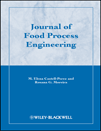ELIMINATION OF LISTERIA MONOCYTOGENES ON COOKED CHICKEN BREAST MEAT SURFACES BY NEAR-INFRARED SURFACE PASTEURIZATION PRIOR TO FINAL PACKAGING
Mention of trade names or commercial products in this article is solely for the purpose of providing specific information and does not imply recommendation or endorsement by the U.S. Department of Agriculture.
Abstract
ABSTRACT
The objective of this research was to develop a process to eliminate Listeria monocytogenes on ready-to-eat chicken meats by near-infrared (NIR) surface pasteurization immediately prior to final packaging. Cooked chicken breast meats, surface-inoculated with a cocktail of L. monocytogenes, were subjected to NIR treatment. The surface temperature of the inoculated samples was increased to and then maintained at a temperature set point (62, 68 or 75C) for up to 8 min, depending on the temperature. On average, the overall rates of bacterial inactivation were 0.35, 0.89 and 1.6 log cycles/min for the samples treated at 62, 68 or 75C, respectively. In contrast, the bacterial inactivation rates were only 0.21, 0.53, 0.63 or 0.95 log-cycles/min for samples submerged under hot water maintained at 62, 68, 75 or 85C, respectively. NIR surface pasteurization process was convincingly more effective than the hot water immersion process to eliminate L. monocytogenes.
PRACTICAL APPLICATIONS
Far-infrared (FIR) surface pasteurization, alone or in combination with hot water immersion (HWI) heating, has been used in the food industry to decontaminate ready-to-eat (RTE) meat surfaces immediately prior to final packaging. Near-infrared surface pasteurization provides another potentially faster alternative to FIR and HWI to eliminate L. monocytogenes on RTE meats.




